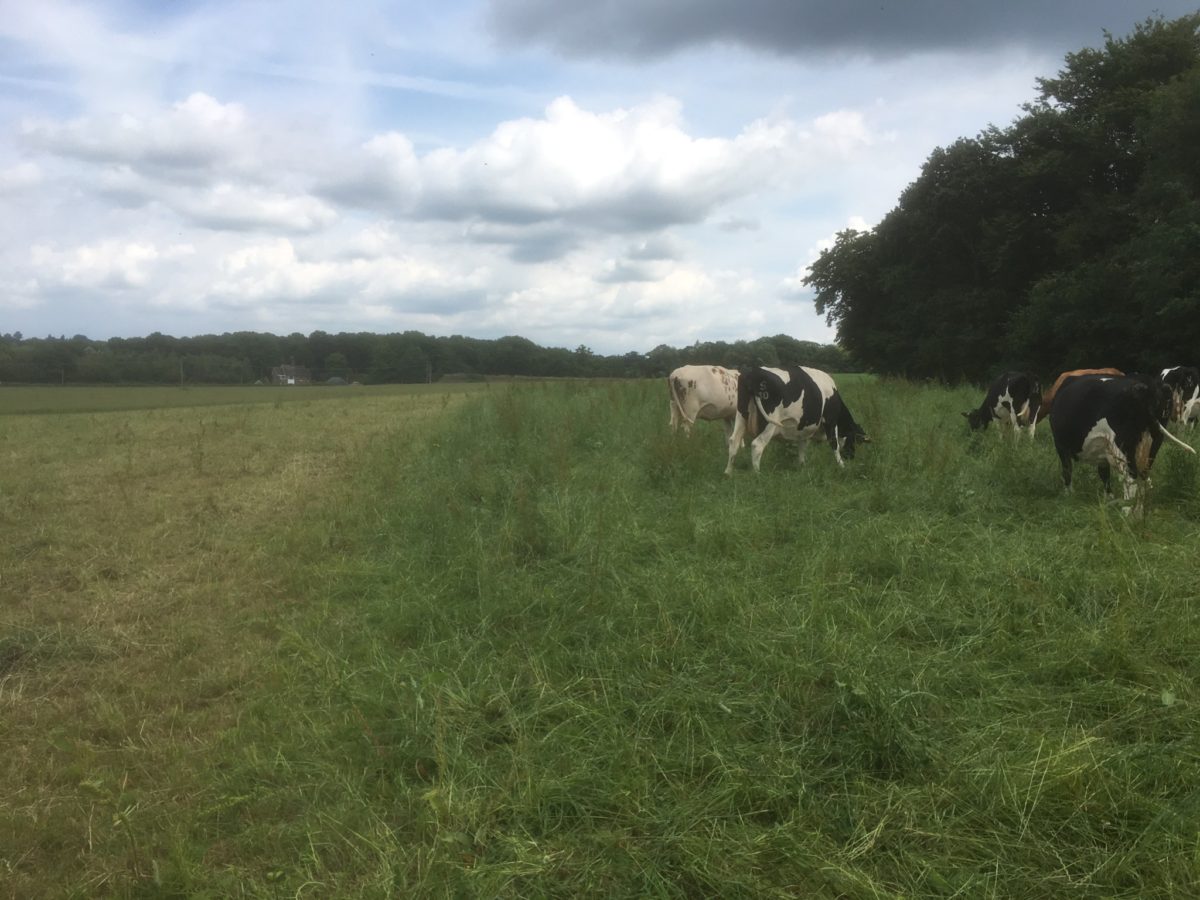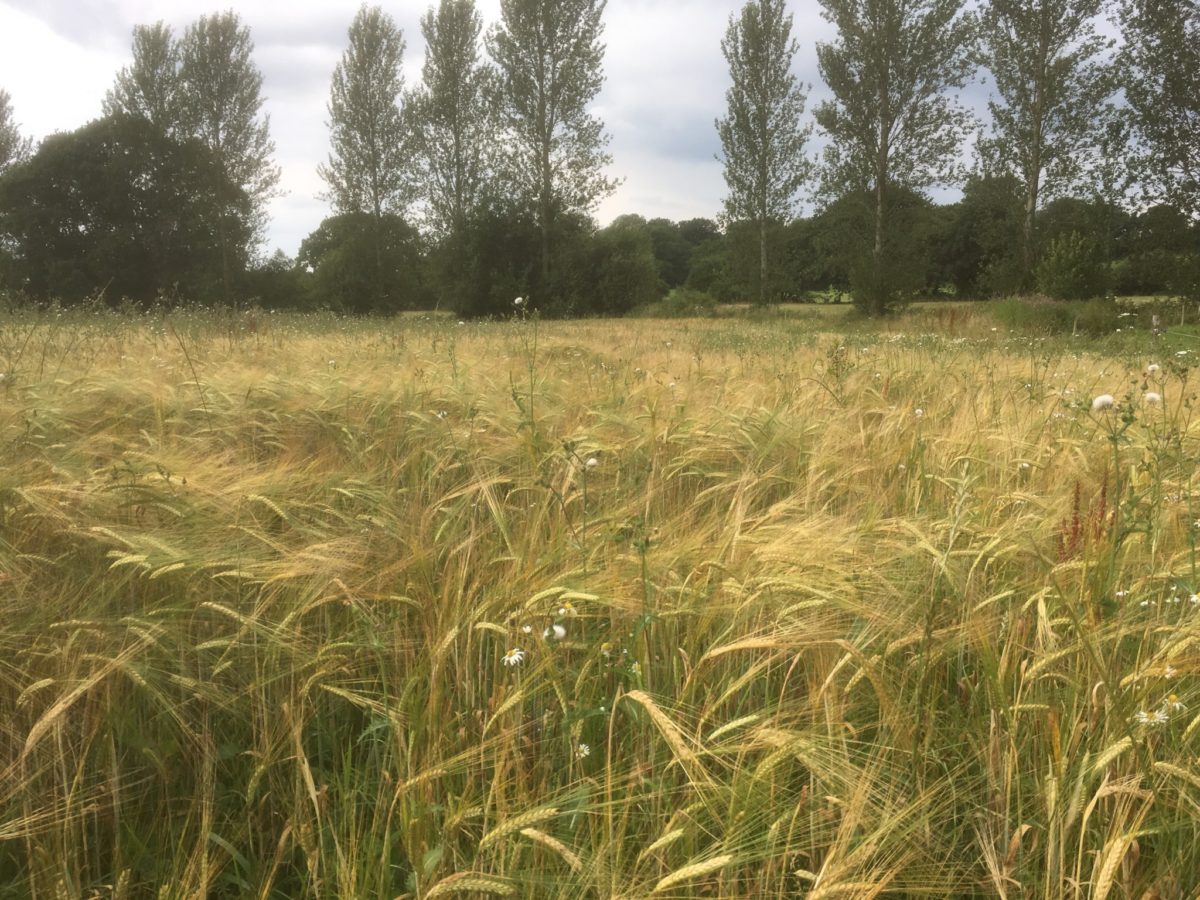As I sit here in the baking office on a sultry July afternoon, I find myself looking backwards and forwards in time during our quietest period of the year.
When my company began running the dairy business here three years ago I was offered plenty of advice, but two of them have really stuck with me since then. Firstly it was the team of people working here. No business, however big or small, technological or innovative, can achieve great things without great people. I count my self lucky to have a great bunch of guys working for us here at Cockhaise but I realise that this is an ongoing challenge and that seeing people develop and bloom should be a lifetime goal.
 Secondly, that in order to make progress we had to set ourselves goals to which we can work towards. Some of these included being able to take a long summer holiday with our family at the end of July, shortening the duration of our calving and becoming as profitable as our non-organic peer group.
Secondly, that in order to make progress we had to set ourselves goals to which we can work towards. Some of these included being able to take a long summer holiday with our family at the end of July, shortening the duration of our calving and becoming as profitable as our non-organic peer group.
Most of these had a 5-6 year deadline on them, but as I sit here after year three, all have been reached. We head off on holiday for a whole 12 days soon, far more than we’ve achieved since coming back to farm. Our calving period has reduced from 15 to 7 weeks and we’ve sat atop our benchmarking group for the past 2 years.
To achieve these and be doing a job we all love is hugely rewarding. The challenge now is not to rest on our laurels, but instead to set the next set of goals for the coming few years. These are likely to be heavily weighted towards soil health and biodiversity on the farm, so watch this space in 3 years time!
“Having been to a farm in Shropshire last week where no antibiotics are used, I’m determined that this should be our goal in the next 3 years.”
The last of our cows still milking have just had their last milking before being dried off and can now take it easy for 8 weeks until they have their next calf. Some of these cows are the ones who aren’t pregnant and will therefore be spending the next 3 months being fattened ready for the abattoir. Although a real shame to see many of them head off on that lorry, the vast majority have had a really long, productive and, hopefully, happy life here.

Another of the big drivers within our business is to cut down on the amount of antibiotics we use on the farm. In the dairy industry one of the biggest uses for antibiotics is for dry cows. It has been standard practice for some time now to give each cow that drys off a long acting antibiotic treatment in order to kill any infection in the udder. Thankfully this is now changing, with many of the dairy processors stipulating that these treatments should be selective and only used on cows with known issues. As organic farmers we have been treading this path for many years and this year only 15 of the 185 cows dried off had antibiotics. Having been to a farm in Shropshire last week where no antibiotics are used, I’m determined that this should be our goal in the next 3 years.
So without milking any cows here what on earth are we doing to manage them? When cows stop milking they will be using all the energy consumed to grow the calf and themselves. However, we don’t want our cows to get too fat as this can cause numerous metabolic conditions after calving, which can lead to a lower chance of becoming fertile again. In order to prevent this happening we try to feed as much hay and older grass to them as possible. For the first 6 weeks this consists of ‘standing’ hay i.e. grass left for a long time in the field which would normally be cut for hay. This is strip grazed and provides plenty of filling grass for the rumen but not too much energy.

As the cows get to within 2 weeks of calving they are then fed hay, which has been made on further away parts of the farm. When choosing fields to do this we are aiming for areas that have received little or no muck in the past few weeks as this increases the amount of potassium in the plant, an element that causes issues at calving.
The last big job here before calving is to make more silage, this time from our crop of barley. Normally this crop would be taken through to ripening and a combine would harvest the grain. However, as the area we grow is now uneconomic to combine, we now treat it as a forage crop just like grass. This means cutting before it ripens fully so that we can get the optimum levels of protein and starch. If we leave it too long it makes terrible silage as it’s just too dry, but cut too soon and it becomes a complete mulch. Timing, as they say, is everything. We also have to factor in the weather and the ability of a contractor to come and harvest it within our ideal window. Fingers crossed we get it right this year!

We also add in some other food to this silage, mainly for our youngstock. With the barley silage we will add cracked beans, which should provide a balanced diet for our yearling heifers. By putting it in the silage it means that we don’t have to lug around 25kg bags of food all summer, saving us both time and wear and tear to our bodies.
Having not seen them for a while, I decided to take a trip to see our 2015 born calves down in Bolney. They had recently been runners up in the ploughing match heifer competition so I expected great things and certainly wasn’t disappointed in what I saw. They are being exceptionally well looked after and should be in a great position for us when they come back here in September.

More Information
We’d love to hear what you think? Leave a comment below.
To stay up to date with the latest Indie Farmer stories follow and like us on facebook, twitter and instagram.




